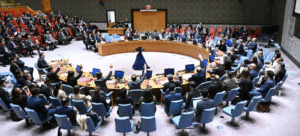When the Walls Tremble: An Earthquake’s Role in a Mass Prison Escape in Karachi
The sudden, seismic tremor that rippled through Karachi, Pakistan, on a recent day unleashed more than just fear and structural damage; it tore open the very foundations of order within a local prison, leading to the dramatic escape of over 100 inmates. This extraordinary event, where the raw power of nature directly facilitated a mass jailbreak, serves as a stark reminder of the inherent vulnerabilities in even the most secure human institutions when confronted by overwhelming natural phenomena. It transforms a routine disaster into a complex narrative of chaos, opportunity, and the precarious balance between confinement and freedom.

The Earthquake as a Catalyst for Chaos
The immediate aftermath of an earthquake within a correctional facility is a scenario ripe for disruption. The sudden jolt, the cacophony of collapsing concrete, the shattering of glass, and the plunging into darkness would instantly shatter the rigid routines and perceived impermeability of prison life. For the inmates, confined within their cells, such an event would be terrifying, yet for many, it would simultaneously present an unprecedented, if fleeting, opportunity. Walls designed to contain might crack, doors might jam open or buckle under stress, and the guards, themselves disoriented and focused on their own safety and the integrity of the facility, would be momentarily overwhelmed. It is in this narrow window of confusion and structural vulnerability that the desperate impulse for freedom finds its fertile ground.
The Breakdown of Order and the Mass Exodus
The sheer number of escapees – over 100 prisoners – underscores the profound breakdown of security that occurred. This wasn’t merely a handful of opportunistic individuals exploiting a minor crack; it suggests a widespread structural compromise or a complete overwhelming of the correctional staff. Whether cell blocks were severely damaged, perimeter walls breached, or control rooms rendered inoperative, the scale of the escape indicates a catastrophic failure of the prison’s defenses in the face of the seismic event. The image of a torrent of desperate humanity pouring out into the chaos of a post-earthquake city paints a vivid picture of the challenges faced by authorities trying to regain control, both inside and outside the facility.
Broader Implications and Disaster Preparedness
Beyond the immediate drama, this incident raises critical questions about disaster preparedness in high-risk zones, particularly for essential public services like prisons. While the primary focus during an earthquake is often on public safety and immediate relief, the security implications of such events in correctional facilities cannot be overlooked. The escape of potentially dangerous individuals back into society poses a significant threat to public order and safety, necessitating immediate and extensive manhunts. Moreover, the event highlights the need for robust, earthquake-resistant infrastructure for critical buildings and comprehensive contingency plans that account for mass prisoner movements and the re-establishment of control under extreme duress.
Lessons from Trembling Walls
In conclusion, the mass prison escape in Karachi, triggered by an earthquake, stands as a unique and compelling illustration of nature’s unyielding power to disrupt human constructs. It was a convergence of a geological force and a profound human desire for liberty, exposing the fragility of even the most fortified spaces. As authorities grapple with the aftermath and the challenge of recapturing the escaped inmates, the incident serves as a poignant and urgent reminder for nations in seismic zones to critically re-evaluate the resilience of their infrastructure and their protocols for managing disaster, particularly when human lives and public safety hang in such a delicate balance.




















